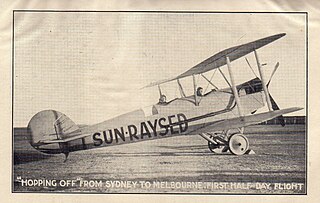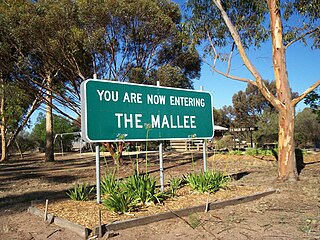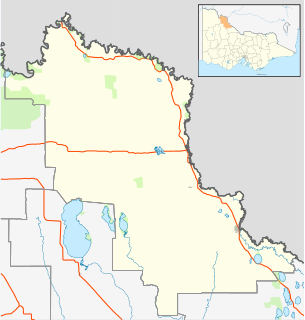| Wine region | |
| Type | Australian Geographical Indication (zone) |
|---|---|
| Year established | 1996 |
| Country | Australia |
| Part of | New South Wales |
| Sub-regions | Murray Darling, Perricoota, Riverina, Swan Hill |
Big Rivers is a grape growing zone in Australia. It covers the southwestern corner of the state of New South Wales. The zone currently includes four wine regions, which cover the main areas of grape growing in the zone, but not all of them.

Australia, officially the Commonwealth of Australia, is a sovereign country comprising the mainland of the Australian continent, the island of Tasmania and numerous smaller islands. It is the largest country in Oceania and the world's sixth-largest country by total area. The neighbouring countries are Papua New Guinea, Indonesia and East Timor to the north; the Solomon Islands and Vanuatu to the north-east; and New Zealand to the south-east. The population of 25 million is highly urbanised and heavily concentrated on the eastern seaboard. Australia's capital is Canberra, and its largest city is Sydney. The country's other major metropolitan areas are Melbourne, Brisbane, Perth and Adelaide.

New South Wales is a state on the east coast of Australia. It borders Queensland to the north, Victoria to the south, and South Australia to the west. Its coast borders the Tasman Sea to the east. The Australian Capital Territory is an enclave within the state. New South Wales' state capital is Sydney, which is also Australia's most populous city. In March 2018, the population of New South Wales was over 7.9 million, making it Australia's most populous state. Just under two-thirds of the state's population, 5.1 million, live in the Greater Sydney area. Inhabitants of New South Wales are referred to as New South Welshmen.
The four regions in the Big Rivers zone are Murray Darling, Perricoota, Riverina and Swan Hill. The Murray Darling and Swan Hill regions span the state border (the Murray River), and are partly in Big Rivers zone in New South Wales, and partly in the North West Victoria zone of Victoria. [1] The area enclosed in the Big Rivers zone is bounded by the state boundaries with South Australia and Victoria. It extends as far north along the South Australia border to include the city of Broken Hill. It extends east along the Murray River past Albury. Parkes and Forbes are towns near the northeastern corner. [1]
Perricoota is a wine region in the Big Rivers zone of Australia. It covers the area of New South Wales bordered on the south by the Murray River between Barmah and Torrumbarry with Moama near the centre. The town of Womboota is near the northwestern extent of the region. The name was registered on 25 March 1999. Perricoota region is named for the historic Perricoota Station pastoral run that was established in the area in the 1850s. Despite being a long way from the coast, it is at an altitude of only 100 metres (330 ft).
Riverina is an Australian Geographical Indication (AGI) registered in the Register of Protected GIs as a wine region. The Riverina AGI is centred on Griffith and is roughly circular with towns on the boundary including Mossgiel, Condobolin, Temora, Junee, Culcairn, Berrigan, Finley, Deniliquin and Moulamein. It does not extend as far south as the Murray River. As such, the Riverina wine region is smaller than the generally known Riverina area.
Swan Hill is a wine region name protected by an Australian Geographical Indication (AGI). It is named for the town of Swan Hill on the south side of the Murray River in the Australian state of Victoria. The wine region spans the Murray and the north eastern part of the region is in the state of New South Wales. The north eastern part of the region is in the New South Wales zone of Big Rivers. The southern and western parts are in the Victoria zone of North West Victoria. The region spans from Lake Charm and Benjeroop in the southeast through Lake Boga and Swan Hill to past Piangil and Tooleybuc in the north.












